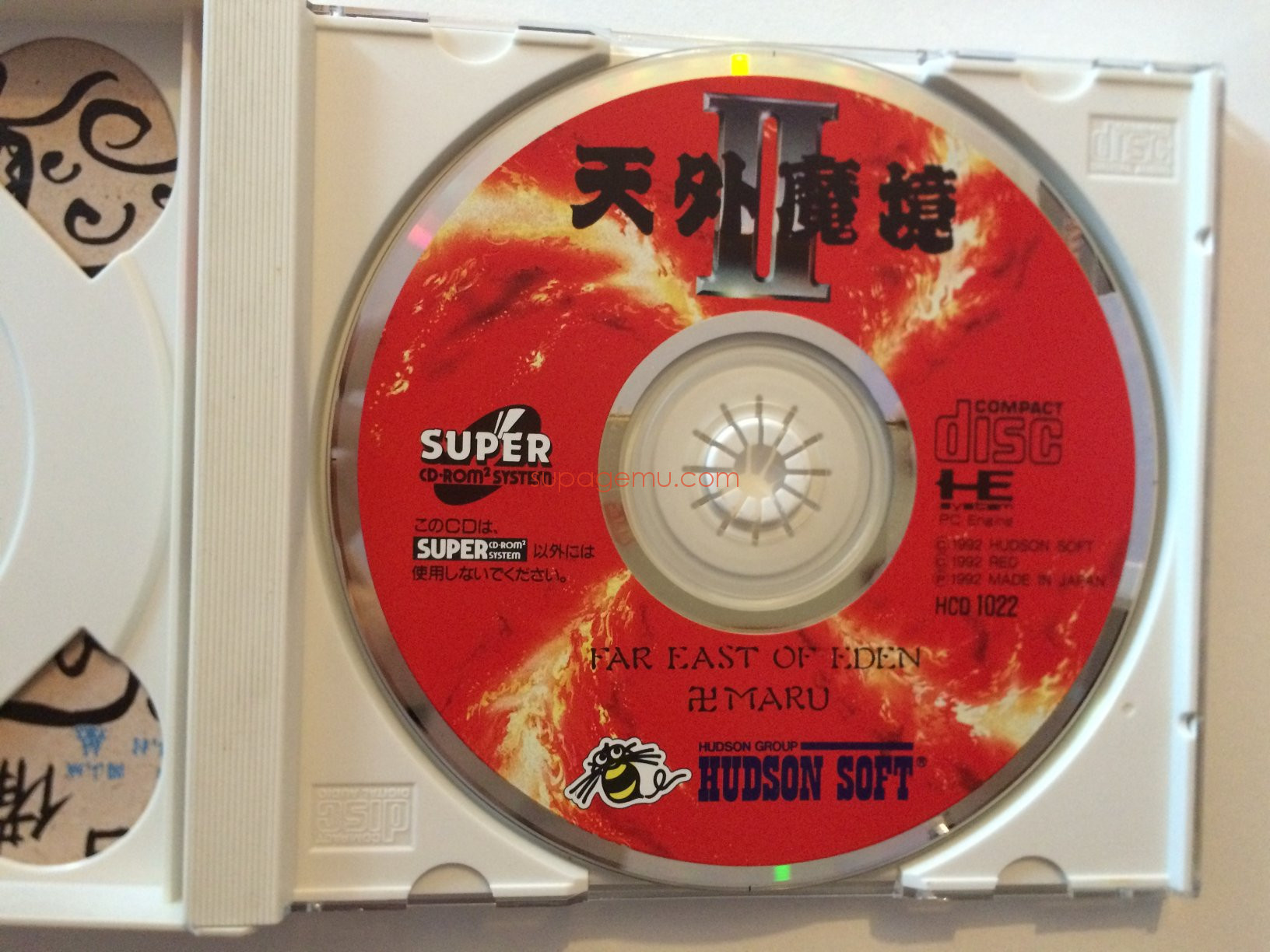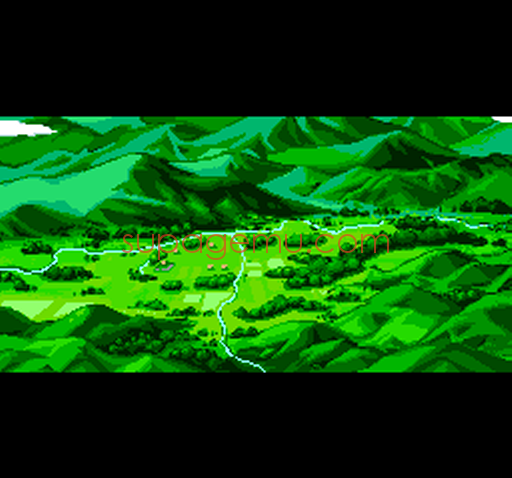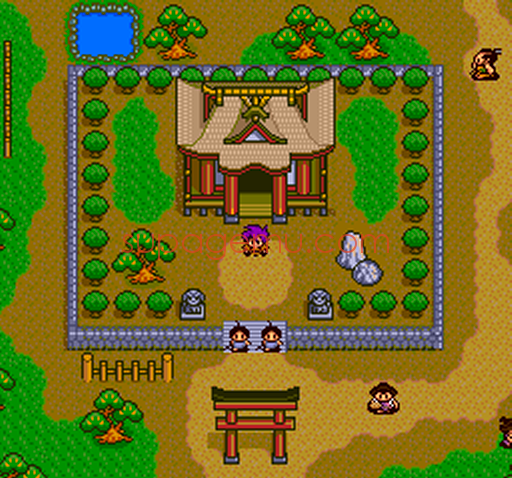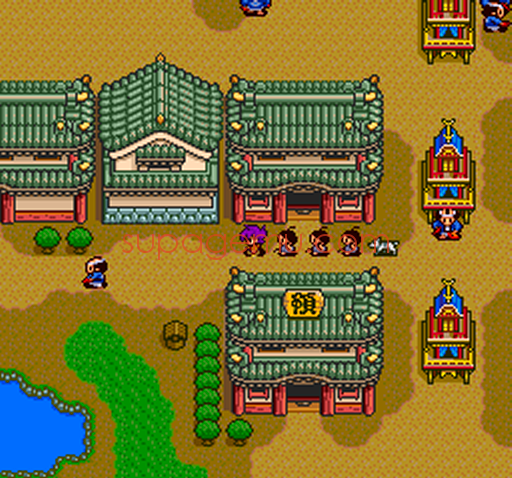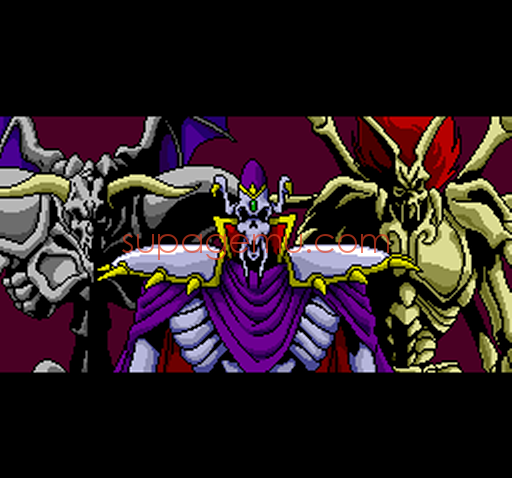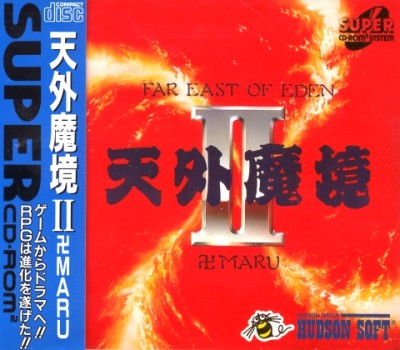
Tengai Makyô II Manjimaru
天外魔境II 卍MARU
RPG
When the subject of late 80s~ early 90s RPGs gets approached, the legendary Tengai Makyô series (Far East of Eden) is one of the biggest names that spring to mind. A lot of RPG experts who played the second episode consider it one of the best RPG of all of time, if not the best.
Tengai Makyô II really gives a sense of gigantism
A legendary RPG of epic proportions
When the subject of late 80s~ early 90s RPGs gets approached, the biggest names that spring to mind are Dragon Quest, Ys, Eiyû Densetsu, Seiken Densetsu, Final Fantasy, Romancing SaGa, Phantasy Star, Fire Emblem, Shining Force, Ogre Batte, Langrisser, Mother, Breath of Fire, Shin Megami Tensei, Cosmic Fantasy, and of course the legendary Tengai Makyô (Far East of Eden). While still being pretty well known in the West, the latter is probably one of the most mysterious and perplexing series for westerners. First of all, no episode of Tengai Makyô has ever been translated into English. Plus, the series originated on the PC Engine, a system which did not sell as well in the West as it did in Japan. Nevertheless, a lot of RPG experts who played the second episode consider it one of the best RPG of all of time, if not the best. In a 2006 poll, readers of Famitsu magazine voted it their 12th favorite video game of all time. That ranking was quite a performance for a PC Engine game from 1992. Does it really deserve its excellent reputation? We shall see…
First and foremost, what can be told about Tengai Makyô II is that it lived up to its gigantic ambition in terms of magnitude. This game was a big project for its time, and is indeed huge as a result:
- 17 provinces, each of which typically consisting of 4 or 5 towns and the same number of dungeons
- Hundredths of different enemies
- 65 magic spells
- 32 techniques
- 17 different transportation vehicles: some boats, a statue, a robot, a turtle, a flying fortress, etc.
- Approximately 60 hours of gameplay, which was quite an impressive length in 1992
Tengai Makyô II really gives a sense of gigantism, yet it never seems empty, and it succeeds in remaining consistent until the end. Each spell can prove useful, the characters are all awesome (some of them being even unforgettable), and every town, dungeon, and enemy was meticulously done: the villages are inhabited by civilian who all say meaningful or funny things, the dungeons are all well designed, and the enemies well drawn and interesting.
Very unique atmosphere and story
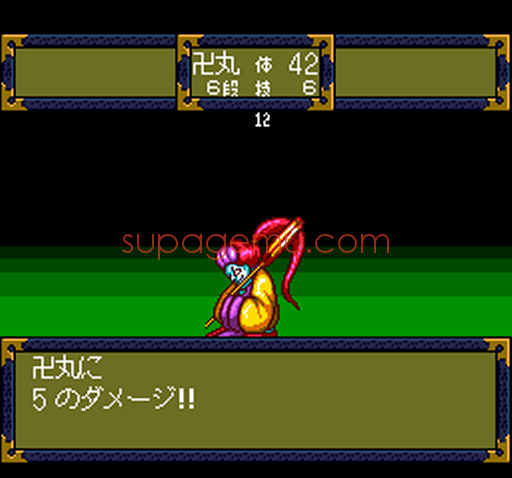
Also remarkable is the very unique atmosphere of Tengai Makyô II: Red Entertainment created an eastern, mystical, and mysterious world, in which dramatic events occur. And yet, there is a lot of humor in this game, which often looks parodic. In the end, the story leaves a very peculiar taste that feels both bitter and amusing. Indeed, some events might make you feel somewhat uneasy: there is a scene in which Kinu (a 14 years old gentle girl who refrained herself from fighting) goes crazy and slaughter her Nemesis, Fubuki Omae. That brutal scene actually got censored in the PS2 and Game Cube version. Another example occurs in the first chapter: Shinigamis mercilessly devoured the son of the innkeeper in Takayama (that story is told, not depicted, but still!). Also, at some point, some villagers literally turned into pigs and were eaten by their own relatives! Besides, there are also sad developments in which characters, whom you grow to like, sacrifice their lives for the sake of the Jipang. Therefore, Tengai Makyô II surprisingly turns out to be the most gruesome episode of the series. For example, Tengai Makyô Zero, one of the subsequent episode, feels a lot lighter and more mystical. However, Tengai Makyô II delivers a lot of humor through its dialogues and introduces colorful characters such as Benten, who is the Buddhist goddess of love, the narcissist dancer Kikugoro, and of course the infamous Kabuki Danjûrô, a crazy egocentric womanizer, who contributes a lot to the parodic aspect. Other funny characters such as Manto (a dumb immortal ape), The Ashimoto Brothers (a group of greedy merchants), and Hoteimaru (a funny foreigner who is also a missionary in Jipang) are back from the first episode, Tengai Makyô Ziria.
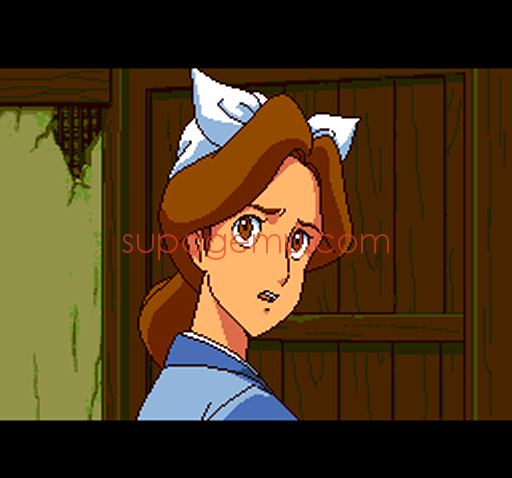
Aside from Kinu and Kabuki, the other characters whom you take control of are Sengoku Manjimaru and Gokuraku Taro. The latter is a giant (208cm and 202 kg) who belonged to the Fire Clan and who drank mermaid tears 992 years ago! As a result, his life expectancy was extended by 1000 years, but he was sent to jail since drinking mermaid tears is strictly prohibited. And last but not least, Sengoku Manjimaru is the main character of this second episode and a descendant of one of the seven heroes from the Fire Clan. In the beginning, though, Manjimaru is merely a brat who enjoys pulling pranks such as replacing dough with mud or torturing the other villager’s steers.
The story actually starts with his neighbors gathering around his house to complain to his mother about his mischievous behavior. Manjimaru then escapes using a rope to join his friend and attend the Takayama Festival. Indeed, the governor Tycoon came from Kyoto to celebrate. But before the party, we learn that Tycoon listened to the three doctors who advised him to break the seal of the seven sacred swords. As a result, an earthquake occurred, and the festival turned into a nightmare. Indeed, the evil lord Yomi and the giant demoniac orchids from the root clan came back to the surface of the earth, destroying and cursing many towns, including Shirakawa, which is Manjimaru’s village. Being the last descendant of the heroic Fire Clan which defeated the Root Clan 1000 years ago, Sengoku Manjimaru now has to grow up, save the 17 cursed provinces of the Jipang, tear apart the seven demoniac orchids, and defeat Yomi.

The story takes place in the ancient and exotic land of the Jipang, which is a feudal Japan. In Tengai Makyô II, the Jipang is stereotypical and filled with gags. That environment brought a lot of fresh air in 1992, compared to the usual stern medieval environments that most RPGs were set in. The well-crafted story includes many plot layers. The background story involves God the creator, who conceived two deities: Mari and Yomi. The two of them were supposed to combine their power to make the earth prosper. The game’s introduction illustrates this background story in a beautiful way. At the end of almost every chapter, we get to see the three doctors reporting the situation to Yomi. On the other hand, each chapter comes with a lot of lighter subplots such as Kabuki Danjuro’s multiple love affairs, Kikugoro’s theatre play, the Ashimoto Brothers’ swindles, etc. The characters’ personalities were a lot more developed than the ones from the other RPGs from the same era (Final Fantasy V, Dragon Quest V, Breath of Fire, Romancing SaGa…). Even secondary characters have a deep personality. For instance, after being rescued from a Shinigami, the goddess Benten has a real conversation with Manjimaru, in which she says that if he were born five years earlier, he could have stayed longer in her room. This kind of funny (and a bit naughty) dialogue, which makes very good use of the CD-ROM format, was virtually non-existent in Super Famicom and MegaDrive RPGs. Not only is the story great, it is also perfectly paced. You will never get bored playing Tengai Makyô II, since interesting events occur almost every hour: getting a new vehicle (there are exactly 11 vehicles that you can move the way you want and 6 that you cannot control), meeting new characters, witnessing a tragic development, etc. The timing in which new playable characters (Kabuki, Gokuraku, and Kinu) join your party is especially perfect. Furthermore, Tengai Makyô II provides a highly satisfying grandiose ending, making its plot one of the best ever written for a RPG.
Balanced and detailed
Not only Tengai Makyo II offers a perfectly paced story, but it also delivers a well-balanced content: this RPG is a well-dosed mixture of exploration, dialogues, and battles, at least in the first part of the game. The dungeons are not too long and the battle frequency remains reasonable except during the last third of the game. Interestingly, you never get the impression that the game is too verbose, even though there are a lot of dialogues.
Also remarkable is the level of detail of the game. For instance, a beautiful screen displaying the dungeon’s name appears every time you enter an important dungeon, and some dialogues change when you lose against bosses and come back to fight them: “So here you are again, Manjimaru. Don’t you understand? You can come back as many times as you want, the outcome will remain the same. Coming. Dying. Coming. Dying. Coming. Dying. Dying, dying, dying!”
Interesting battles
The way battles are managed in Tengai Makyô II also makes it stand out. Whereas Dragon Quest battles are heavily based on stats, experience, and level-up, Tengai Makyô II gives you the option of beating your opponents without spending hours leveling. Indeed, you can freely allocate spells, use tricks, and build a real strategy thanks to the numerous options (for instance, there are three ways to defend) and abundant spells. Here are some of the most effective tactics:
- Cast the Jôheki spell on Gokuraku (it will protect him from any attack) and then have him defend all your party with the protection command (“Kabau”). As a result, all your members will be immune to any attack for one turn.
- Cast the Akakage spell to clone Manjimaru and then have the clones use the Matsumushigiri skill to inflict heavy damage.
- Use the ice spell Tôryû to randomly paralyze enemies.
Always displaying the enemies’ HP was also a great idea that makes the battles more interesting. Sadly, this idea was not carried on in the subsequent episodes.
The perfect Japanese RPG?
Tengai Makyô II might seem perfect at first glance, but some flaws become obvious in the long run. The game appears to be well balanced at first, but there are really too many random battles in some places. It gets especially annoying when you spend a few minutes healing your party and then get into another random encounter after walking a mere few steps. Another irritating characteristic is the miss rate during battles: it is really too high, and each missed hit is accompanied with an aggravating sound effect. Another minor flaw is the fact that the position of your vehicles is not saved. After each save, you will have to go back to the place where the vehicle originally appeared!
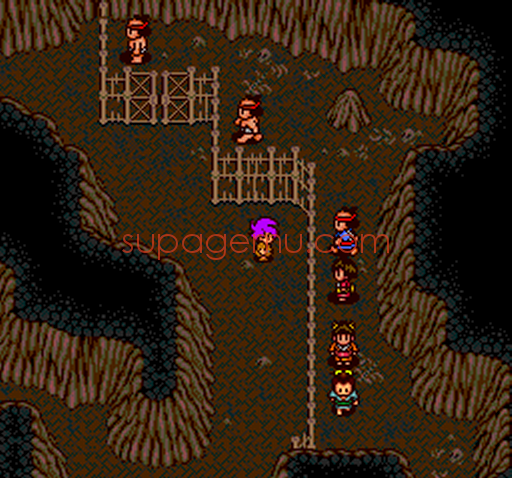
More surprisingly, even though the game was a blockbuster, it is not devoid of bugs! At one point, in the region in which you have to tear apart the blue orchid, you have to go in Iga village to get two key items from an old man you rescued from a boss. If you did not keep at least two free slots in your items inventory when you talk to the old man, you will never get the key items, even if you come back with two free slots!
Of course, it should also be noted that at least some basic Japanese knowledge is required to easily navigate through the menus, items, spells, towns, and dungeons of the game. A high Japanese level is needed to fully understand the story and the jokes.
One last thing: avoid the Game Cube and Playstation 2 remakes at all cost (the DS version is ok). The terrible 3D graphics do not suit the game at all, some scenes and dialogues got censored, and the difficulty level, which was perfect on PC Engine, has been tuned down. Get the PC Engine version instead: it is very cheap and as pure as an angel descending out of heaven, holding in her hand a copy of ActRaiser, illuminating the retro gaming world with splendor.
The in-game graphics are nothing impressive by today’s standard. They might even repel a lot of RPG fans. However, they were more than decent at the time the game came out, and the full screen anime scenes were gorgeous, especially thanks to the magnificent character’s design.
There could have been more tunes, but their quality is top notch. Hirohiko Fukuda and the famous Joe Hisaishi did a fantastic job. Some themes are unforgettable and contribute a lot to the game’s great and unique atmosphere.
The menus are not very well designed and not really user friendly. There are so many spells that they are a bit of a pain to manage. The number of items your party can carry is limited. This makes things interesting because you will not be able to bring 99 HP potions with you: you are forced to manage your items in a clever way. But that also makes your inventory a pain to manage, especially toward the end.
Tengai Makyô II is a well-dosed mixture of exploration, dialogues, and battles. The way battles are managed makes them very interesting. Indeed, the huge numbers of spells and skills allows you to build a real strategy, and the outcome of bosses’ encounters depends more on your tactics than on your characters’ levels.
Red Entertainment created an eastern, mystical, and mysterious world with a very unique atmosphere. The story and dialogues were very well written, and the characters’ personalities were a lot more developed than the ones from the other RPGs from the same era.
Tengai Makyô II stood out in many ways: its gigantic proportions, its length, its environment (a stereotypical Jipang filled with gags), and its story, which leaves a very peculiar taste. It looks and feels completely different from the other early 90s RPGs.
Completing the game takes between 50 and 80 hours. I beat it in 75 hours, but I spent a lot of time trying to translate some dialogs and managing my spells and items. Tengai Makyô II was infamous for being long and difficult (at least for people with no knowledge of the Japanese language). It is indeed the longest episode in the series.
FINAL SCORES
Tengai Makyô II deserves every single praise it gets from old school RPG fans. This legendary RPG proves to be long, well balanced, and perfectly paced. It takes advantage of the PC Engine Super CD-Rom² system capabilities to deliver great dialogues and a fantastic atmosphere.
Red Entertainment wrote a well-crafted story that includes many plot layers and colorful characters. Most of other 90s RPGs feel lifeless and unimaginative in comparison. Tengai Makyô II is a must for PC Engine owners and RPG fans, along with Ys Book I & II, Ys IV The Dawn of Ys, and Emerald Dragon.





